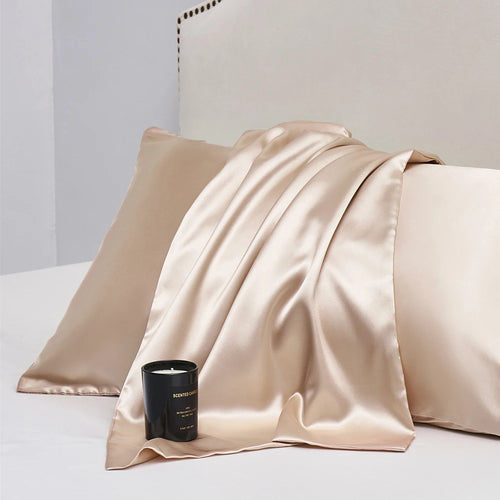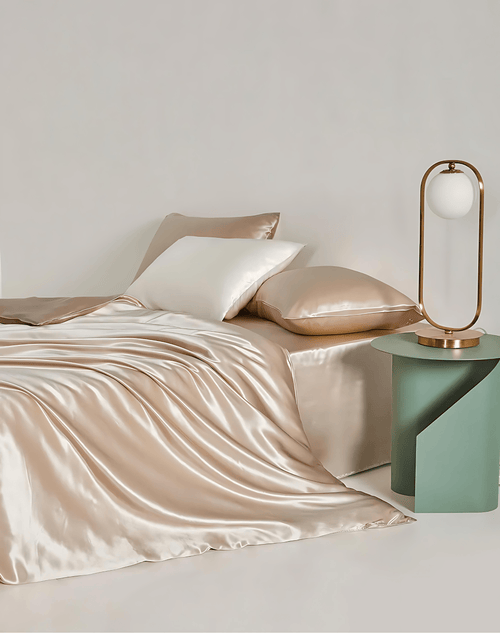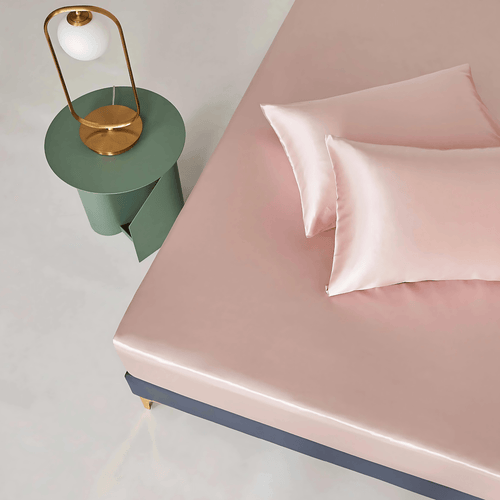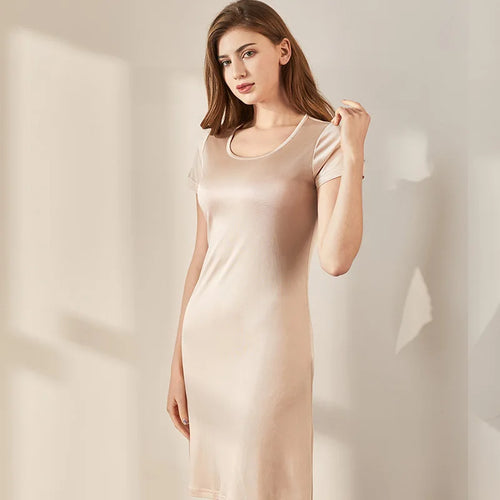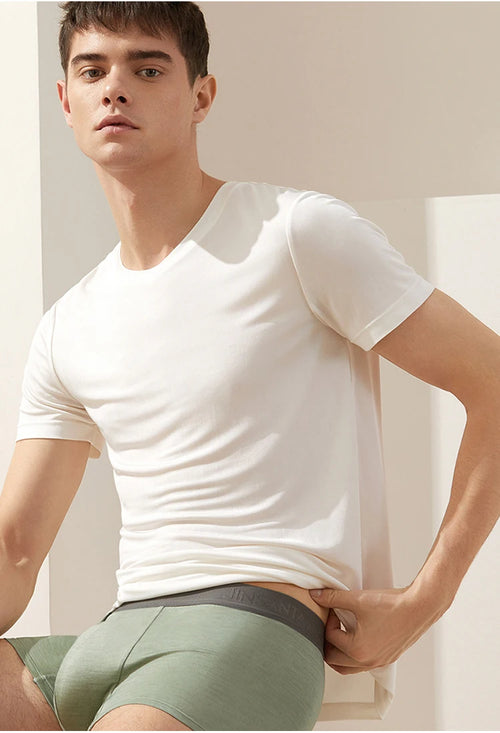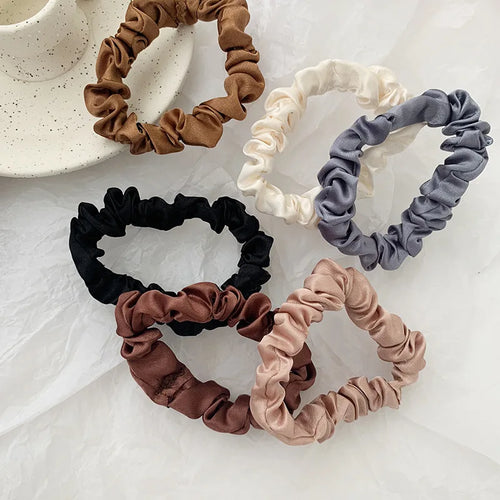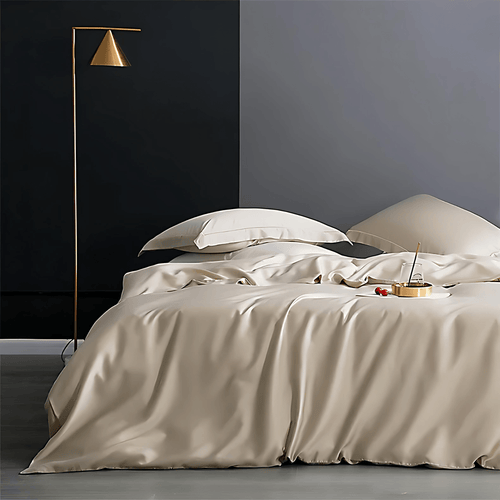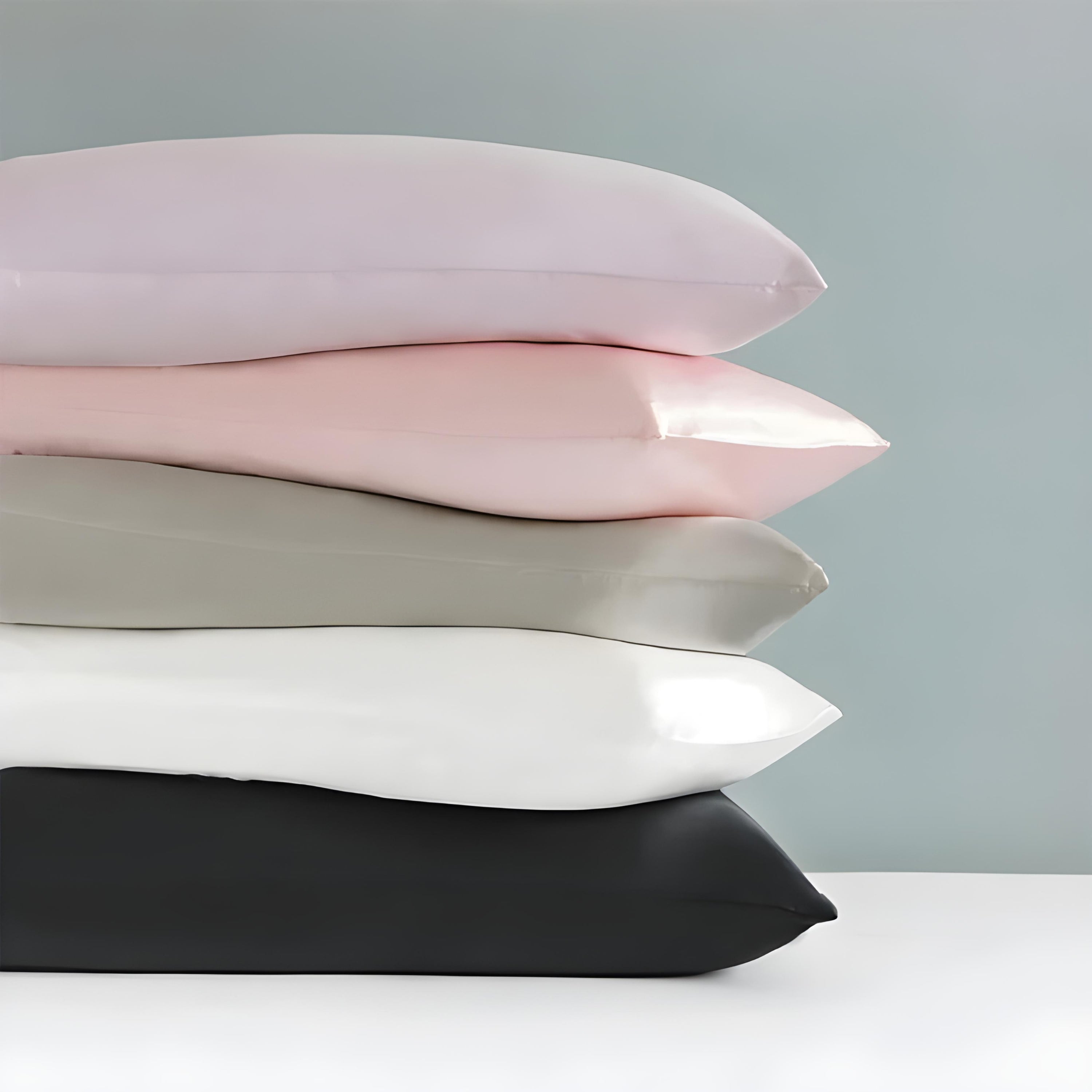The ultimate guide to silk pillowcases: transform your sleep and beauty routine

The quest for restorative sleep and an optimized beauty routine often finds its answer in an unexpected but essential element: the silk pillowcase. Luxurious and soft, the silk pillowcase is not only a symbol of refinement but also a beauty and wellness asset. Its unique properties help minimize friction on skin and hair, thus reducing hair breakage and sleep marks, while promoting optimal hydration. Few bedding accessories offer such benefits, making the silk pillowcase a popular choice for those seeking to combine comfort and beauty.
This ultimate guide is dedicated to exploring everything there is to know about silk pillowcases from start to finish, from their undeniable benefits for skin and hair to tips for choosing the best available option. We will also cover the importance of care and cleaning to preserve the quality and effectiveness of these precious textiles. Whether you are already converted to using silk pillowcases or considering acquiring one for the first time, this guide offers a comprehensive overview to help you make an informed choice, taking into account different mommes, sizes, and quality standards, such as Oeko-Tex certifications.
The benefits of silk pillowcases for the skin
Reduction of wrinkles
Silk pillowcases are beneficial for reducing wrinkles. Their smooth and soft surface produces less friction, meaning it does not pull on the skin as much as a fabric like cotton would [1]. This feature helps prevent morning wrinkles that could become permanent over time [2]. Furthermore, the fact that silk does not wrinkle prevents leaving marks on the face upon waking, thus contributing to a younger and more rested appearance [3].
Skin hydration
One of the remarkable properties of the silk pillowcase is its ability to maintain skin hydration. Unlike other popular materials like cotton, silk absorbs less moisture, allowing the skin to retain more of its natural hydration, thus reducing the risks of dryness or irritated skin [1]. This feature is particularly advantageous for those who use lotions or serums in their nighttime skincare routine, as silk is less likely to absorb these products [1]. Additionally, silk helps keep moisture close to your face, which is beneficial for those who suffer from dry skin, especially in seasonally dry climates [2].
Reduction of skin irritations
The silk pillowcase is also appreciated for its softness and its ability to reduce friction on the skin during sleep. This fabric not only helps prevent facial wrinkles and skin irritations but also contributes to the health and beauty of the skin by maintaining its natural hydration [4]. Moreover, silk is known for its thermal regulation, meaning it can keep you cool in summer and warm in winter, thus promoting more comfortable sleep without interruptions due to temperature fluctuations [4]. This regulation helps reduce frequent nighttime awakenings that can disrupt the sleep cycle and worsen skin irritations.
The benefits of silk pillowcases for hair
The silk pillowcase is a wise choice for those looking to preserve the health and beauty of their hair during sleep. Thanks to its incredibly smooth surface, it significantly reduces friction, resulting in less frizz and breakage.
Less frizz
The softness of silk helps keep hair smooth and controls frizz. Studies show that silk pillowcases cause 43% less friction than traditional cotton pillowcases, which helps keep hair soft, hydrated, and frizz-free [5]. Additionally, silk's ability to retain the hair's natural moisture helps prevent dryness and frizz formation, especially in curly or kinky hair [6].
Breakage reduction
The smooth surface of silk also helps reduce breakage. Unlike cotton, silk does not pull on hair or absorb its natural oils, which helps preserve hair strength and elasticity [5]. The easy glide of hair on the silk pillowcase minimizes damage caused by rubbing, thus reducing breakage and split ends. This feature is especially beneficial for those with fine or damaged hair [6].
Hairstyle protection
Sleeping on a silk pillowcase can also help preserve your hairstyle. The reduction in friction means hair stays in place more easily, which helps maintain hairstyles longer. Whether your hair is straightened, curly, or elaborately styled, the silk pillowcase helps protect against nighttime disturbances that might otherwise require morning touch-ups [7]. Additionally, the less absorbent nature of silk helps maintain the effectiveness of hair products applied before bed, allowing the hair to fully benefit from their effects throughout the night [5].
In conclusion, choosing a silk pillowcase is an investment in the long-term health of your hair. Not only does it help prevent physical damage like breakage and frizz, but it also helps maintain the natural hydration and shine of the hair while protecting your hairstyle.
How to choose the best silk pillowcase
When selecting a silk pillowcase, several factors must be considered to ensure a quality purchase that will meet your comfort and skin and hair care needs.
Types of silk
Silk quality can vary significantly, so it is crucial to understand the different types and grades of silk. Mulberry silk, for example, is known for its superior quality, often compared to Egyptian cotton for its uniform fiber length and durability [8]. This type of silk offers a smooth surface that reduces friction against the skin and hair, which is essential for preventing frizz and sleep wrinkles.
Silk momme weight indicators
The weight of silk, measured in momme, is a key indicator of its quality. A higher momme means the silk is denser and generally of better quality. For pillowcases, a weight of 22 momme is often considered ideal, offering a good balance between durability and softness to the touch [9][10]. It is important to check the momme weight of the pillowcase to ensure it will provide the expected benefits in terms of skin and hair care.
Size and style options
Silk pillowcases come in a variety of sizes and styles, so it is important to choose the one that best fits your pillows and aesthetic preferences. Some pillowcases use an envelope closure while others may have a zipper to better keep the pillow in place [8]. Additionally, the color of the pillowcase can also play a role in your decision, as some colors may require dyes that alter the natural properties of silk [11].
By considering these factors, you will be able to choose a silk pillowcase that not only enhances your sleeping experience but also contributes to your beauty care routine.
Care and cleaning of silk pillowcases
Hand washing vs machine washing
Hand washing is preferred for silk pillowcases due to their delicate nature. It is advised to use cold water and a mild detergent specially designed for silk [12]. For hand washing, immerse the pillowcase in water, gently agitate for one to two minutes, then rinse with cold water until the soap is completely removed [12]. Avoid wringing the fabric to extract water; gently press it instead [13]. If machine washing is necessary, use a mesh laundry bag to protect the pillowcase and select a delicate cycle at low temperature [12].
Drying tips
It is crucial to dry silk pillowcases properly to maintain their quality and durability. Avoid direct sunlight exposure, as it can fade and damage the silk [13]. For optimal drying, hang the pillowcases in the shade or indoors, away from direct heat sources [14]. If a dryer must be used, set it to a no-heat cycle to avoid damaging the fibers [14]. Also, do not use clothespins that could mark the fabric [14].
Tips to extend durability
To maximize the longevity of your silk pillowcases, some additional precautions are recommended. First, always use a mild detergent without enzymes, as enzymes can degrade the protein fibers of silk over time [14][15]. After washing, it is recommended to store them in breathable plastic bags away from direct sunlight to prevent fading and deterioration [14]. Finally, to avoid persistent wrinkles, it is suggested to iron slightly damp silk pillowcases with an iron set to the lowest temperature, using a cloth between the iron and the silk [14].
Conclusion
Through this detailed presentation of the benefits and considerations when purchasing a silk pillowcase, it becomes clear that this accessory can significantly transform our sleep and beauty routine. Investing in a high-quality pillowcase proves to be a crucial step toward improving skin and hair health by minimizing harmful effects such as hair breakage and skin irritations, while promoting restorative and comfortable sleep.
It is essential, however, to consider key factors such as the type of silk, momme weight, and care practices to ensure you fully benefit from silk's exceptional properties. Ultimately, choosing the right silk pillowcase is not just a matter of luxury but a way to support overall well-being and preserve the youth and vitality of our skin and hair in the long term.
FAQs
-
Is it really advantageous to sleep on a silk pillowcase?
Sleeping on a silk pillowcase can be beneficial because its smooth surface reduces friction during sleep. This helps minimize tangled and frizzy hair, thereby reducing morning mess and preserving your hairstyle. -
Are silk pillowcases effective?
Advocates of silk pillowcases often claim they have natural antimicrobial properties that help prevent acne. However, there is no scientific evidence supporting this claim. Silk pillowcases are likely to collect as many bacteria as cotton ones. -
What are the disadvantages of a silk pillowcase?
One of the main drawbacks of silk pillowcases is that the smooth fabric can become slippery, especially if it is a lower-quality blend. This can affect the sleeping experience and overall comfort. -
Are silk pillowcases beneficial for the face?
Silk dehydrates less than cotton, which helps maintain the skin's natural hydration overnight. Sleeping on a silk pillowcase can help improve the appearance of your skin and keep it softer, thus preserving the youthfulness of your face.
References
[1] - https://www.sleepfoundation.org/best-bedding/silk-pillowcase-benefits
[2] - https://www.nytimes.com/wirecutter/blog/are-silk-pillowcases-really-better-for-your-skin/
[3] - https://jupiterhadley.com/the-positives-and-negatives-of-a-silk-pillowcase/
[4] - https://studiosoie.fr/en/blogs/info/the-benefits-of-silk-pillowcases-for-sensitive-skin
[5] - https://promeed.com/blogs/secret-behind-silk/from-frizz-to-fabulous-a-silk-pillowcase-transformation-promeed
[6] - https://mulberryparksilks.com/blogs/mulberry/fight-hair-loss-with-silk
[7] - https://www.telegraph.co.uk/recommended/home/best-silk-pillowcases/
[8] - https://www.goodhousekeeping.com/home-products/best-sheets/g3948/best-silk-pillowcases/
[9] - https://celestialsilk.com/blogs/news/how-to-choose-a-silk-pillowcase
[10] - https://thisissilk.com/en-fr/blogs/news/what-is-a-momme-which-is-the-best-momme-for-silk-pillowcases
[11] - https://mulberryparksilks.com/blogs/mulberry/buyer-beware-when-shopping-for-a-silk-pillowcase
[12] - https://thxsilk.com/blogs/news/how-long-do-silk-pillowcases-last
[13] - https://www.quora.com/How-long-of-a-life-span-can-I-expect-my-silk-pillowcase-to-have-if-I-wash-it-once-a-week
[14] - https://mulberryparksilks.com/blogs/mulberry/the-best-way-to-dry-silk-pillowcases
[15] - https://mulberryparksilks.com/blogs/mulberry/how-to-wash-your-silk-pillowcases

